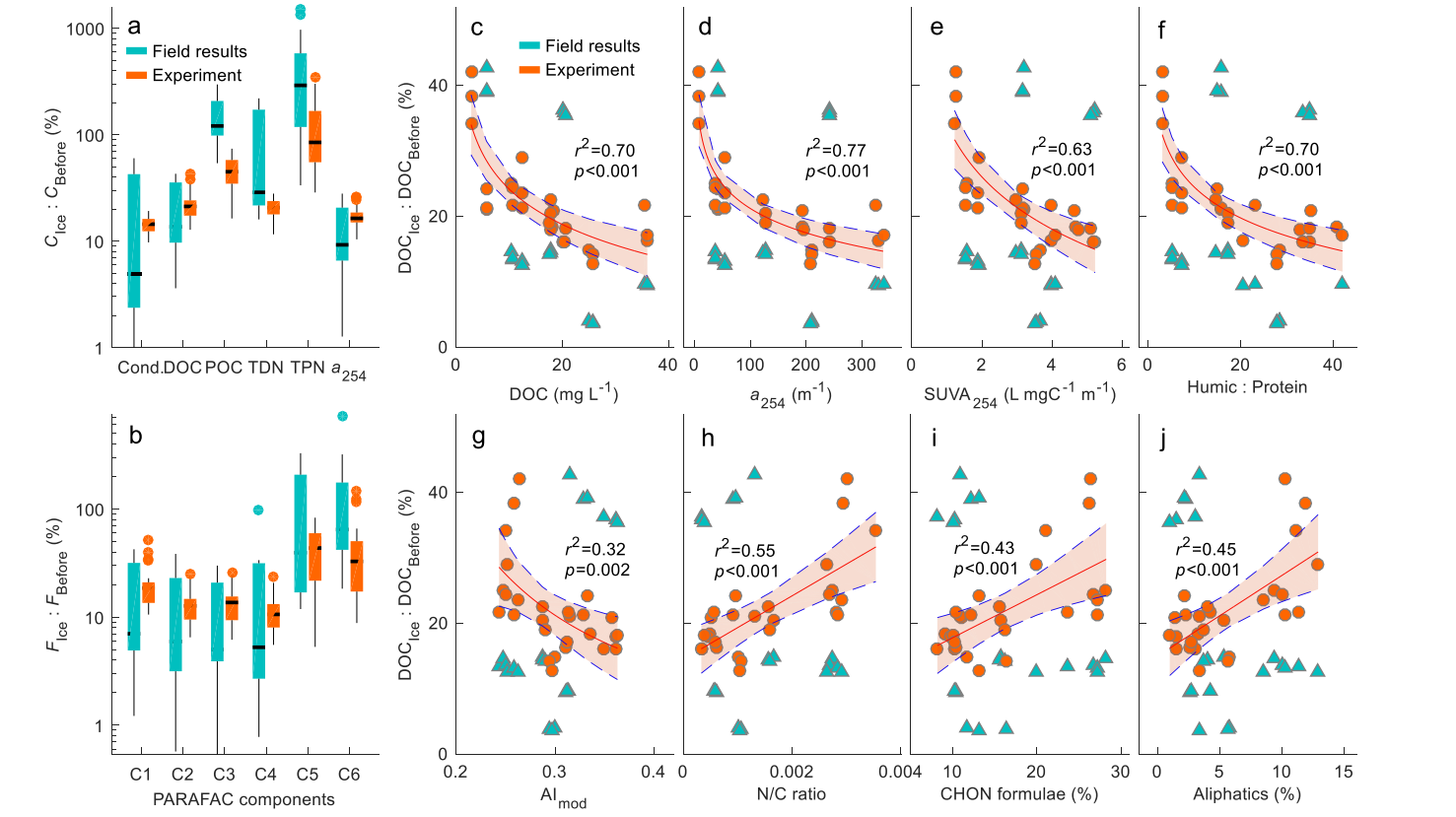How lake ice formation impacts the transformation of dissolved organic matter?
Lakes account for 3.7% of global non-glaciated land surface and can receive and transport up to 5.1 PgC yr-1 of carbon flux, accounting for approximately 70% of the annual net carbon sink flux at the land surface.
Dissolved organic matter (DOM) is the main form and active component of natural organic matter in lakes. Microbial- and photo-degradation of DOM can release large amounts of small molecule organic acids and biogenic substances such as carbon, nitrogen, and phosphorus, which support heterotrophic microbial metabolism and influence the eutrophication process in lakes.
During the growth of lake ice, a DOM fraction is expelled from the growing ice crystal junctions into the underlying unfrozen water column, another DOM fraction may be trapped in the ice, and the rest DOM fraction may be flocculated and deposited as particulate organic carbon. However, the mechanisms of how lake ice formation impacts DOM partitioning among the lower unfrozen water column, the upper lake ice layer and the particulate form, as well as the variability in the molecular composition of DOM and the driving mechanisms are largely unknown.
In collaboration with Prof. Lars J. Tranvik et al. from Uppsala University, Sweden, Dr. Yongqiang Zhou from Prof. Yunlin Zhang's group at the Nanjing Institute of Geography and Limnology, Chinese Academy of Sciences, conducted a systematic study on how the partitioning, composition, and driving mechanisms of DOM in ice, water, and particulate form are affected by lake ice formation through field sampling collection prior to and post lake ice formation and a series of laboratory experiments.
Their findings were published in Geophysical Research Letters on February 16.
The results indicate that aromatic DOM was preferentially expelled into the underlying unfrozen water column during lake ice formation. In brown water lakes with high DOC and aromaticity, DOM was readily expelled from the ice crystal junctions to the lower unfrozen water column. During lake ice formation, 16.2 ± 4.7% of DOC was retained in the upper lake ice layer, 81.3 ± 5.7% was expelled into the lower unfrozen water column, and only 1.3 ± 0.7% flocculated as particulate organic carbon and sank to the lake bottom. The apparent retention factor of DOC decreased from clearwater to brown-water lakes, and increased with decreasing contribution percentages of aromatics and with increasing aliphatics.
In a future warming climate, inputs of nutrients and terrestrial DOM to lakes, as well as in-lake primary productivity will likely increase, which implies that both terrestrial inputs of aromatic DOM and endogenous production of aliphatic DOM will likely increase in the future. Lake ice formation may lead to a concurrent increase in expelling of aromatics from lake ice and aliphatics being trapped by lake ice. “A warmer climate implies that a large amount of lake ice will disappear during the winter half year and the duration of the ice cover will significantly decline, thus will decrease the occurrence of internal ice-exclusion effects on organic matter,” said Dr. Zhou.

Contact
TAN Lei
Nanjing Institute of Geography and Limnology
E-mail: ltan@niglas.ac.cn
